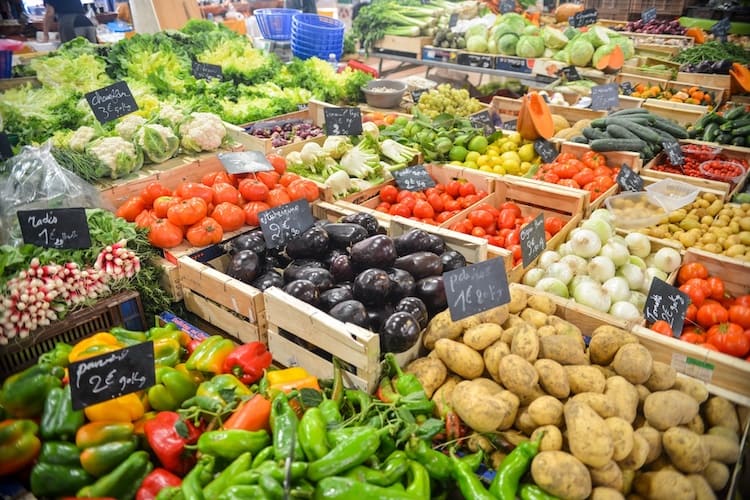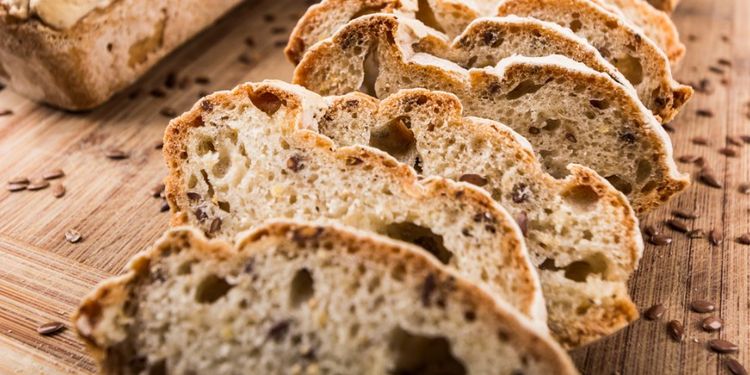A Complete Guide To Performing A Detoxing Liver Flush
When it comes to the human body, its amazing and intricate network of cells, nerves, organs, and muscles performs some pretty incredible functions, all of which work in tandem to allow us the gift of life. This gift is, unfortunately, often taken for granted. Once in a while, it’s a good idea to do yourself a favor and actively focus on ways to improve or ease the functioning of those hard working organs.
The liver is the largest organ inside the human body, and it’s definitely one of the hardest working. Situated in the upper right side of the abdomen, under the diaphragm, it receives 85 percent of the body’s blood through the hepatic portal vein, which drains almost all the blood from the intestinal tract. This insures that all the nutrients absorbed through food go directly to the liver, for storage to be used when needed, and that all the toxins absorbed can be filtered and deactivated.
The liver is able to process about 500 vital biochemical metabolic reactions, while at the same time cleaning and filtering up to 1.5 liters of blood per minute. Because this vital organ is the purification center for the body, it can sometimes get overworked, which can lead to a decrease in its efficiency. This is where liver detoxing and cleansing comes in. A sort of “reset button,” cleansing can have all sorts of health benefits. Mastering how to cleanse the liver properly is the key…

The Organ Of Resilience
The liver has the ability to repair and regenerate itself rather rapidly. This is a feat that no other organ can really claim, at least not on the same scale as the liver. Liver flushing and detoxing is an activity that dates all the way back to the ancient Greeks, who used to cleanse the liver to help with bile flow, mental clarity, and increased energy.
The Gallbladder
Located underneath the liver, the tiny gallbladder acts as a reservoir for bile that’s secreted by the liver. The liver produces between 500-1,500 ml of bile each day, and it’s held in the gallbladder until it’s needed to help emulsify (break down), digest, and absorb fats from food. Bile stored here can build up over time to form a sort of “mud,” which can condense and form into mineral stones (calculi). If not cleansed often enough, these stones can grow rather large and become quite painful, resulting in the need for surgery to completely remove the gallbladder itself.
Bile also helps the body to properly use cholesterol, which is also produced by the liver. Cholesterol is actually essential to certain regenerative and metabolic functions. It’s only when it becomes out of balance, and allowed to build up in the body, that cholesterol creates a problem. Cleansing the liver can also help positively affect levels of bile and cholesterol in the body.

Causes Of Liver And Gallbladder Problems
Known causes of gallbladder and bile retention issues are:
- Excessive coffee and alcohol intake
- Chronic stress
- Irregular meals, and foods lacking proper fiber, nutrients, and essential fats
- Prolonged use of medications
- Inflammation
- Hepatitis
These conditions can cause fat to accumulate in the liver, causing it to become inefficient in assimilating carbohydrates, fats, and cholesterol into the body. A liver cleanse or flush can help to reset these functions, but before going into what this entails, it must be made clear that this information is for educational purposes only, and that any action you wish to take should be done under the supervision and approval of your medical doctor.
Flushing And Cleansing
During a flush, the liver is encouraged to eliminate old bile trapped in the bile ducts, resume regular evacuation of the gallbladder, and improve its excretory function.
Cleansing the liver has the following goals:
- Promote proper bile flow and motility
- Eliminate accumulated toxins, fats, and cholesterol

What To Expect
It’s important to spend several days preparing the body for detox by using dietary and natural aids to soften the fatty toxins that need to be flushed out. This softening helps them to assume a more liquid state, helping to ease expulsion through the liver and bile ducts.
The end of the preparation phase is followed by a day of fasting while taking mineral salts and certain oils. This day-long fast allows the liver and gallbladder ducts to make stronger and more efficient muscular contractions to flush out their unwanted contents. This can cause some people to become tired and irritable, which is why it’s a good idea to conduct a liver flush when you have a few days to yourself, without a lot of other obligations or social commitments.
Bile excreted during the liver cleanse is very greasy and dense, like green butter. It forms into “stones” in the intestines, and can often hang out in the colon for a while. This can lead to discomfort, and the risk of reabsorbing these toxins if they’re not properly removed. Thus the need for understanding and following the proper cleansing protocol. Some people also opt to do a hydrotherapy cleanse for the colon to remove any last little bits that may be hanging on a couple of days after the cleanse is finished.
Surprisingly, the cleanse can also drag out a fatty, whipped cream-like froth, and worms of various sizes. Disgusting, but it’s pretty common. Medicinal supplements and plants that help activate the liver should be taken just before or during a main meal. The most common ones include:
- Celery root
- Dandelion root extract
- Turmeric
- Birch leaf
- Green artichoke
- Black radish
- Marian thistle
- Virgin olive oil
- Mint
- Rosemary
- Fumitory
- Ginger
- Thyme
- Lemon juice
- Magnesium sulfate
Traditional Chinese Medicine practitioners maintain that along with the physical detritus removed during a liver cleanse, the emotions and energies of the body will be reset and “cleansed” as well. TCM practitioners hold the liver as the body’s center for emotions and passions. It’s not uncommon for people doing a liver flush to become emotional, and even cry during the process.
Two to three weeks post cleanse, many patients report improved digestion, energy, and mental clarity, as well as a more positive attitude and a feeling of greater vitality.
It’s a good idea to undergo a liver flush for the first time under the supervision of a healthcare practitioner, who can guide you through the process, effects, and benefits of detoxification. This is especially imperative for any individuals with a history of liver or gallbladder disease or disorders, as they may be at higher risk for certain rare side effects of detox. It should also be noted that a liver flush is not a procedure that should be undertaken too frequently. This is where a professional opinion can again help guide you.

Protocol
Days One Through Five
Eat and Drink:
- Fruits, vegetables, whole grains, and legumes. Can be eaten raw, steamed, boiled, grilled, roasted, but not fried. It’s preferable to cream or puree them.
- Natural nuts and honey
- Yogurt, kefir, cottage cheese, quark
- Water, decaf herbal teas, natural juices, rice/almond/cashew/hazelnut milks
Avoid:
- Processed foods: sodas, chocolates, cakes, chips
- Coffee, alcohol, tobacco
- Battered fried foods, spicy foods, mayonnaise, sauces
- Animal protein: meat, fish, chicken, seafood, eggs
- Dairy: cow’s milk, cheeses, butter
- Cold/frozen beverages
Note:
- Eat small amounts of food (150-200 g) every four hours (five meals/day)
- Drink a minimum of two liters of liquid each day
- Eat slowly, chewing thoroughly
- Snacks in mid-morning and mid-afternoon are allowed, and should consist of fresh fruit, fruit juices, veggies, nuts, yogurt, honey
Food Supplements
Take throughout the full five days of cleansing:
- Epsom salts (powdered magnesium sulfate): Dissolve one heaping TBSP in 200 ml of water. Drink all at once, after dinner. You may put a little honey or lemon on the tongue to cut the salty taste if desired.
- Lemon juice and celery: 300 ml. Dice two large, organic celery stalks. Squeeze the juice of one lemon into 200 ml of water, and add celery. Or, take two capsules of celery root extract at breakfast each day.
- Natural apple juice: one liter. Make sure there are no added sugars or preservatives. Or, take one capsule of malic acid (600-1,000 mg) with breakfast each day.
- Powdered psyllium seed husks: One heaping TBSP, or a single-dose packet. Dissolve in 250 ml of water or natural apple juice. Drink either right after Epsom salts or just before bedtime. Be sure to take this either an hour before or an hour after any nighttime medications.
Day 6
7:00 am – Take one heaping TBSP of Epsom salts dissolved in 200 ml of room temperature water. Do this on an empty stomach. It’s okay to prepare this the night before.
7:30 am – Mix the juice of two squeezed lemons, or one grapefruit, with 150 ml of high quality cold-pressed extra virgin olive oil. Also be sure to do this on an empty stomach. It’s okay to take sips of mint tea to combat the taste of oil in the mouth and throat.
Return to bed and lay on the right side with a warm pillow or blanket over the liver region. Rest or sleep for one to two hours.
9:30 am – Still on an empty stomach, take one more TBSP of Epsom salts dissolved in 200 ml of warm water.
10:30 am – Eat breakfast according to the dietary plan of the last five days.
After dinner: One TBSP powdered psyllium seed husks dissolved in 250 ml water or apple juice. Continue taking this fiber drink nightly for one week post cleanse.
Moving forward, be sure to eat as healthfully as possible in order to promote lasting effects of the detox. And to point out again, this isn’t medical advice, and any detox that you consider undertaking should be done under the supervision of your medical doctor.
